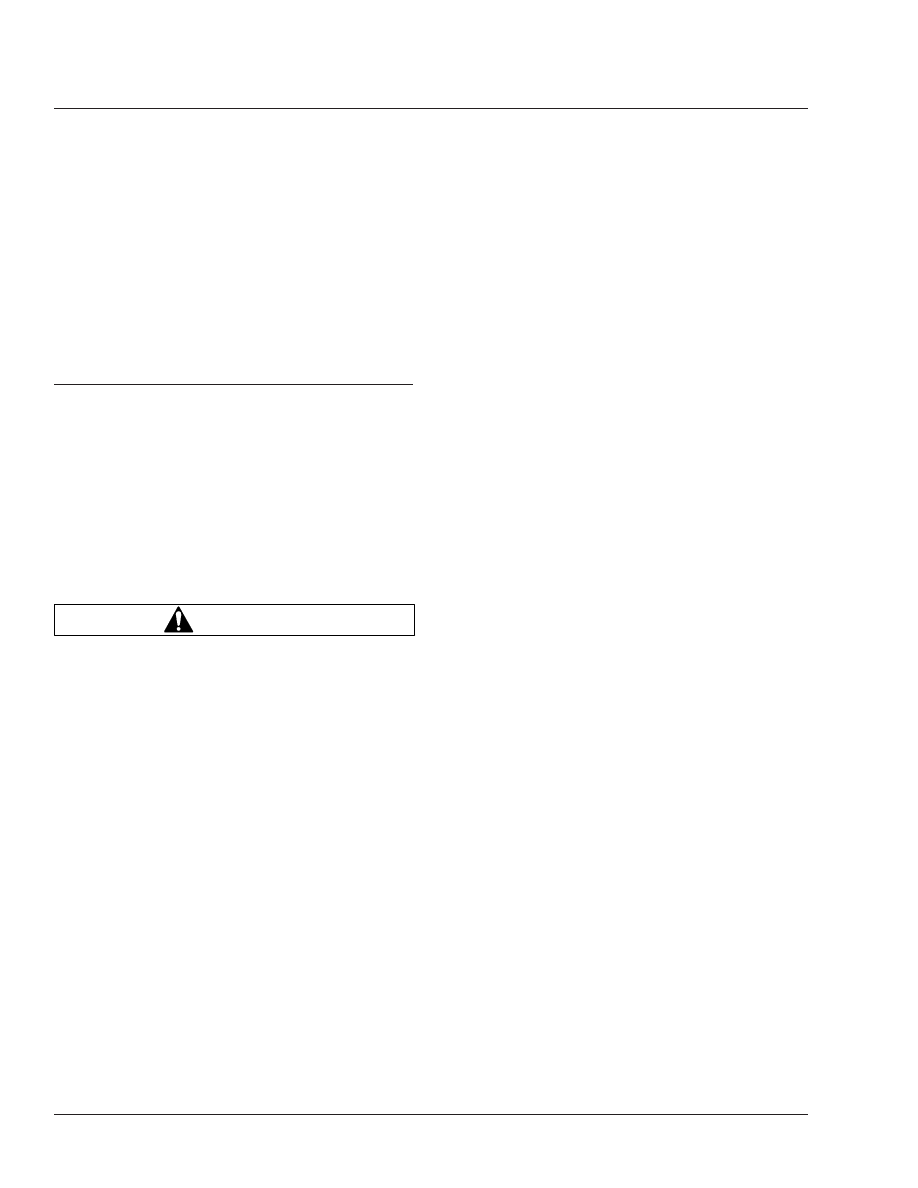Freightliner Coronado 132 / 122SD. Manual - part 14

hardened washers. Do not re-use bolts, nuts,
and washers on fifth wheel mountings.
11. After inspecting the fifth wheel, lubricate all mov-
ing parts with a chassis or multipurpose grease.
Apply a generous coating of grease to the top
plate to fill the grooves, or depressions, on the
top plate. See MOP 31–02 in this manual for lu-
brication instructions.
31–02 Fifth Wheel Lubrication
To maintain proper fifth wheel operation, always lubri-
cate the fifth wheel after an inspection has been
performed.
IMPORTANT: Lubricate the fifth wheel:
• After power washing, or steam cleaning.
• If the vehicle operates in harsh conditions such
as salt spray from road surfaces, or in ex-
tremely dusty environments.
• After any service that requires removal of lubri-
cant from the fifth wheel head or components.
WARNING
Failure to properly lubricate the fifth wheel could
result in a possible disengagement of the trailer
from the tractor, which could result in personal
injury or property damage.
Fontaine
1.
Tilt the top plate forward (the front of the fifth
wheel is down) and apply grease to each bearing
area through the zerk fittings located on each
side of the top plate just to the front of the
bracket pins. Continue to apply grease until it is
coming out of the back of the bearing. It may be
necessary to raise the rear of the fifth wheel with
a pry bar to open up the pocket slightly and
allow the grease to flow through. A substantial
amount of grease may be required initially to fill
the reservoir.
Tilt the fifth wheel ramps down (the rear of the
fifth wheel is down) and repeat the greasing pro-
cedure. Rock the top plate back and forth sev-
eral times to spread the grease over the bearing
surface.
2.
Inspect the trailer kingpin plate and top surface
of the fifth wheel to make sure each is properly
greased. A liberal coating of grease should be
applied to the complete surfaces of both the
trailer kingpin plate and the top surface of the
fifth wheel.
NOTE: Do not use a lube plate (high density
polyethylene) on top of the fifth wheel or on the
kingpin instead of grease without prior approval
by Fontaine Fifth Wheel. The additional thick-
ness of this material can prevent the proper op-
eration of the fifth wheel and may cause a dan-
gerous condition.
NOTE: Fontaine suggests the use of a Moly
based lubricant such as Mobilgrease XHP 320
or equivalent when applying lubricant to the
locking jaw and wedge.
3.
Lubricate the fifth wheel prior to opening and
closing it. Separate the jaw and wedge with a
screwdriver, and grease the full length of their
mating surfaces. Lubricate the top and bottom
contact surfaces of the jaw and wedge. See
. Open and close the fifth wheel several
times to further distribute the grease.
Lightly oil other moving parts in the fifth wheel.
4.
Apply grease to the top plate. Spread grease all
over the mating surface of the top plate. Be sure
the grease pockets built into the top plates are
full of grease.
Holland FWS1
Apply a heavy coat of grease to the top plate, either
through the grease fittings located on the underside
of the top plate, or by direct application.
Holland FW35
1.
Using a water-resistant lithium-base grease,
grease the top plate.
2.
Using a light oil (such as SAE 10W or 20W
motor oil), lubricate the cam track and pivot. See
3.
Grease the yoke tips, locks, and the release
handle and spring; see
. Grease the
mounting bracket supports through the grease
fittings. A “low temp” grade grease rated for
-30°F (-34°C) or lower such as Cato Oil and
Frame and Frame Components
31
31/6